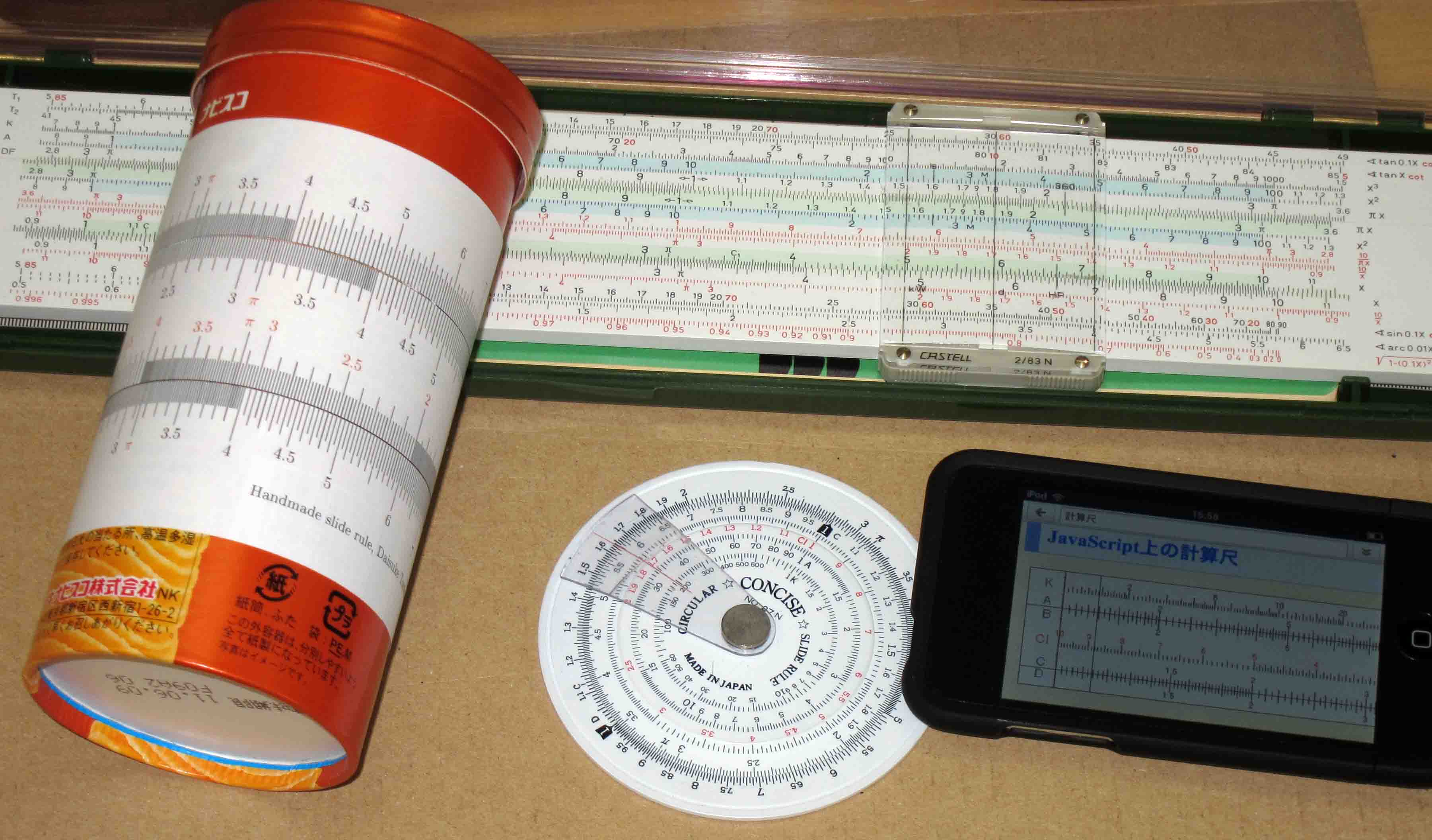
That's the ruler for multiplication and division. There are three kinds of its forms; regular, circular and cylindrical. All three kinds appear in the photo right. The regular one is a product of Castell-faber, Germany. The circular one is a product of Concise, Japan. The last one is made by my hands.
A cylindrical slide rule is very good for hand making and using because it does not need to any curve cuttings and its total dimension is smaller than regular slide rules.
1.
Download the slide rule sheet and print it on a A4 paper.
Monochrome printing does not cause matter although colour printing is
preferable.
2.
Cut the sheet into three rules.
The upper one is called the "C" scale.
The upper side of the middle one is "D" scale.
The lower side of the middle one is "DI" (D-inverse) scale.
The lower one is the same to upper most one, the "C" scale.
3.
4.
Bind the middle scale onto the cylinder.
Do NOT fix it on the cylinder. Make sure it can rotate.
If it rotate smoothly, it's Finished! Conguratulation!
How to use is completely same to concise's circular slide rules. If you have it's manual, please see it to use cylindrical ones.
To calculate 3.6 x 6.8, first set the origin of the D scale to 3.6 of the C scale (below left). Then, read the C scale which corresponds to 6.8 of the D scale (below right).
To calculate 3.1 / 7.7, first set 7.7 of the D scale to 3.1 of the C scale (below left), then read the C scale which corresponds to the origin of the D scale (below right).
To calculate 1.3 x 0.62 / 3.1, First do division, i. e. set 3.1 of the D scale to 1.3 of the C scale (below left). Then, read the C scale corresponds to 6.2 of the D scale (below right).
